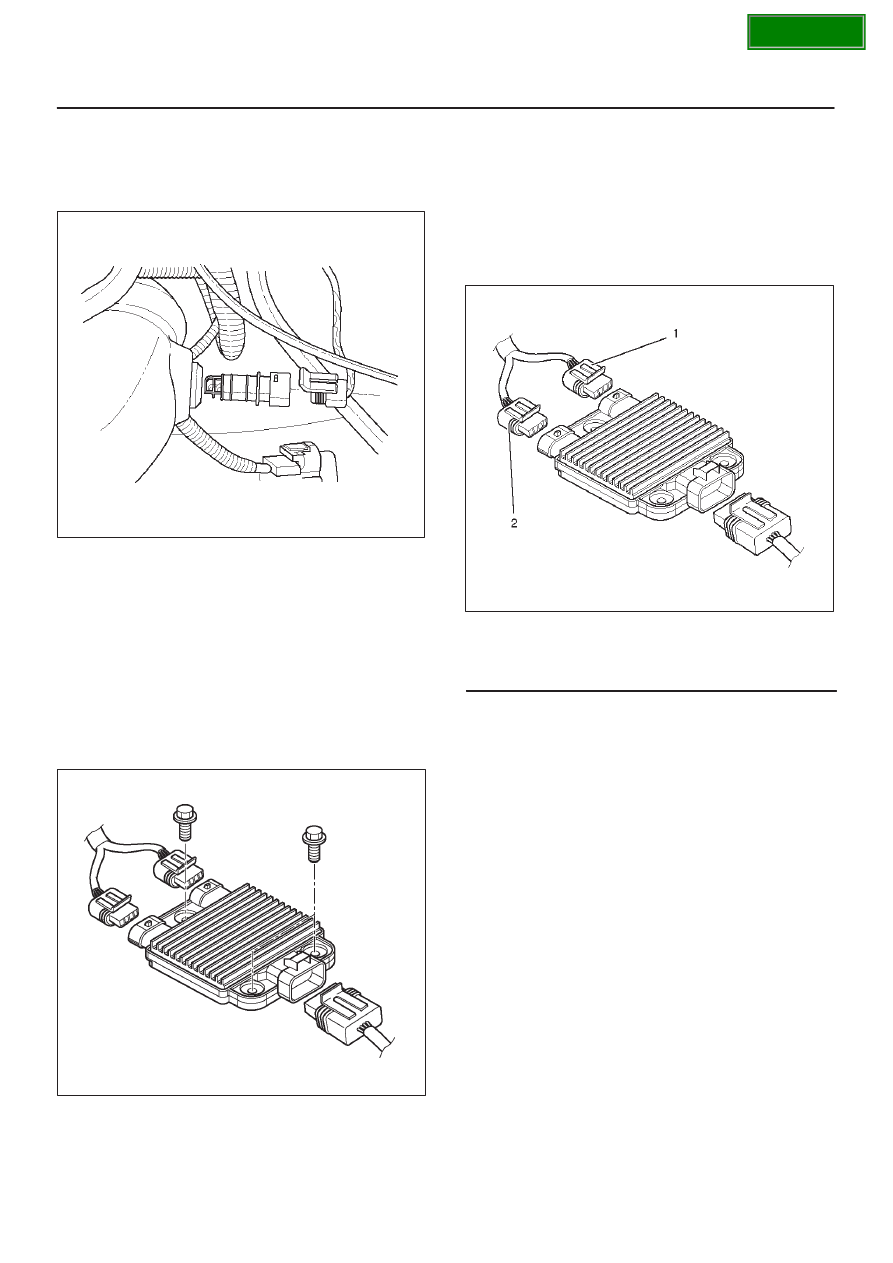Content .. 1550 1551 1552 1553 ..
Opel Frontera UE. Manual - part 1552

6E–423
6VD1 3.2L ENGINE DRIVEABILITY AND EMISSIONS
Installation Procedure
1. Install the IAT sensor into the grommet in the intake
air duct.
2. Correct the IAT electrical connector.
TS23741
3. Install the engine cover.
4. Connect the negative battery cable.
ION Sensing Module
Removal Procedure
1. Disconnect the negative battery cable.
2. Disconnect the ION sensing module connector.
3. Remove the bolts and the ION sensing module from
the common chamber.
060R100143
Installation Procedure
1. Install the ION sensing module on the common
chamber with the bolts.
Tighten
D
Tighten the ION sensing module to 4 N·m (35 lb
in.).
2. Connect the ION sensing module connectors as
shown in the illustration.
060RY00003
Legend
(1) Green (Light Blue) Color Connector
(2) Blue Color Connector
3. Connect the negative battery cable.